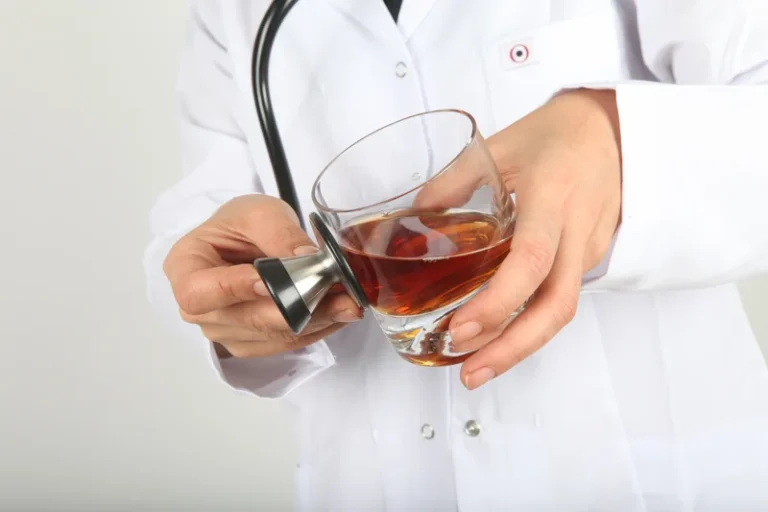
As the name suggests, this category of alcoholism refers to individuals who have developed an addiction as a result of those around them – their close friends and, more often, their family. This is a unique category of alcoholism, referring to adult alcoholics or individuals of middle age who are typically well-educated and outwardly appear to have a ‘normal’ and put-together life. Individuals in this category are not fully developed, meaning that the brain can undergo significant developmental damage as a result of high alcohol consumption.

What Factors Contribute to Alcoholism?
When that next drink comes, they circle back to stage one, and the addiction cycle continues. Because alcoholism has been identified as a disease, determining the exact manifestation and severity gives addiction specialists a powerful tool that can shape more personalized and effective treatment. Just 1 out of 4 Intermediate Familial alcoholics ever seek professional treatment. Roughly 50% meet the criteria for a clinical diagnosis of depression, while 20% battle bipolar disorder. No two alcoholics are exactly the same, but many people with alcoholism share common characteristics.
Alcohol Use Disorder by Demographics
Genetic, environmental, and psychological factors influence the risk of becoming an alcoholic. Some may be more inclined to develop alcoholism due to their genetics and family history, while others may develop alcoholism due to environmental and psychological factors. However, identifying similarities can help people identify what kind of alcoholic they are. In this blog article, we cover the different types of alcoholics and how they can seek help to stay sober. Alcohol impacts brain chemistry, and regular exposure to the mind-altering substance may actually change the way the brain’s circuitry works.
- This can also mean that much of your time is spent recovering from the effects of alcohol, with hangovers or withdrawal symptoms.
- These are people that may seem to have their lives together; they may be the ones that others look up to.
- AUD can involve binge or heavy drinking, but some people with this condition do not engage in these drinking behaviors.
- Repeated binge drinking episodes may lead to the development of alcoholism or AUD over time.
Do Different Alcoholics Undergo Specific Treatment Types?
This group tends to start drinking younger (around 17) and also develops an alcohol dependence earlier (around 32). This subgroup is very likely to have had immediate family members with alcoholism. They also have high 5 types of alcoholics probability of suffering from antisocial personality disorder, depression, generalized anxiety disorder, and bipolar disorder. This group also suffers from high rates of cigarette, marijuana, and cocaine addiction.
- Although they have low rates of anxiety disorders, they have about a 24 percent probability of having major depression.
- This spectrum of addiction might make it more challenging to group people into even theoretical categories, though for diagnostic and other purposes, researchers and treatment professionals may try.
- There is help and support (including support groups) available to help them successfully recover from their illness.
- Each subtype is unique and offers a bit more insight into alcohol abuse.
- With functioning alcoholism, the drinking frequently escalates, and the eventual deterioration in home life, working life, and overall well-being are inevitable.
- This type of treatment allows you to receive help in an outpatient setting while still attending to your everyday responsibilities.
Drinking to Conform
They tend to be middle-aged with a higher chance of clinical depression and a family history of AUD. At Gateway, we can help you begin your recovery journey no matter what type of alcoholic you are. We specialize in holistic care that focuses on your physical, social and emotional health.
- When they do get treatment, they prefer 12-Step programs to rehab clinics.
- This post discusses five distinct categories of people who suffer from alcoholism.
- They are not regular drinkers, but they may join in a champagne toast or have a glass of beer when others are doing the same.
- About 31% of functional alcoholics have a close family member who also has alcohol dependence.
- Support groups provide social support, encouragement, and accountability which can be beneficial during recovery.
Download our app today to find out how virtual medication-assisted treatment for alcohol use can help you achieve your recovery goals. Drinking in moderate amounts daily—one or fewer drinks for women and two or fewer for men—does not necessarily indicate an alcohol use disorder. However, it can make you more likely to develop AUD, especially if you become tolerant to one or two daily drinks and require larger amounts to achieve the same feeling. Regardless of the AUD subtype you fall into, medication-assisted treatment for alcohol use can help. And with Confidant Health, you can get the support you need right from home. Download our app to enroll in our online medication-assisted treatment program.
The National Institute on Alcohol Abuse and Alcoholism (NIAA) studied alcoholics and how they differ. Each subtype is unique and offers a bit more insight into alcohol abuse. There are, however, five identified subtypes of alcoholics as identified by the National Institute of Health. Researchers found that they have the highest rates of employment among alcoholics, with 68% working full-time and an average family income of nearly $50,000 a year.
The functional subtype, which makes up about 19.5% of alcoholics, is just that. With ⅔ of this group having sought out treatment for their alcoholism they are the most likely of all the subtypes to seek help. Help for them can be found through rehabilitation programs, self-help groups, detox programs, private specialists, social workers, and psychiatrists. They have the highest divorce rate — 25.1 percent — of all the alcoholic types. Only 9 percent have gone to college, and only 43 percent are employed full time.


Alcoholism may become a method of self-medication to fight depression and other emotional symptoms. The name chosen for this group seems odd but was selected because the majority of its members are middle-aged and come from families with a history of alcoholism. It is unclear, however, whether this statistic is accurate because they watched alcoholic behavior growing up or whether they have a genetic disposition to inherit the disorder. Interestingly, while this group drinks less often than other alcoholics, they tend to “binge drink” more often and consume more alcohol during those binges. For example, on “binge days,” members of this group often consume up to 14 drinks. Although the average age of this group is 24, most have spent at least the last four years as an alcoholic.

Sabino Recovery Provides Trauma-Focused Treatment for Alcoholism
If you’re concerned about your own drinking or that of a loved one, it can be helpful to learn more about the five different progressions within the alcoholism continuum. To achieve sobriety, he says, treatment must focus on “complete abstinence and elimination of other forms of substance abuse and also mainstreaming their behaviors” so they function better in society. MAT uses medications approved by the FDA to treat AUD alongside counseling and behavioral therapies.


Comment closed!